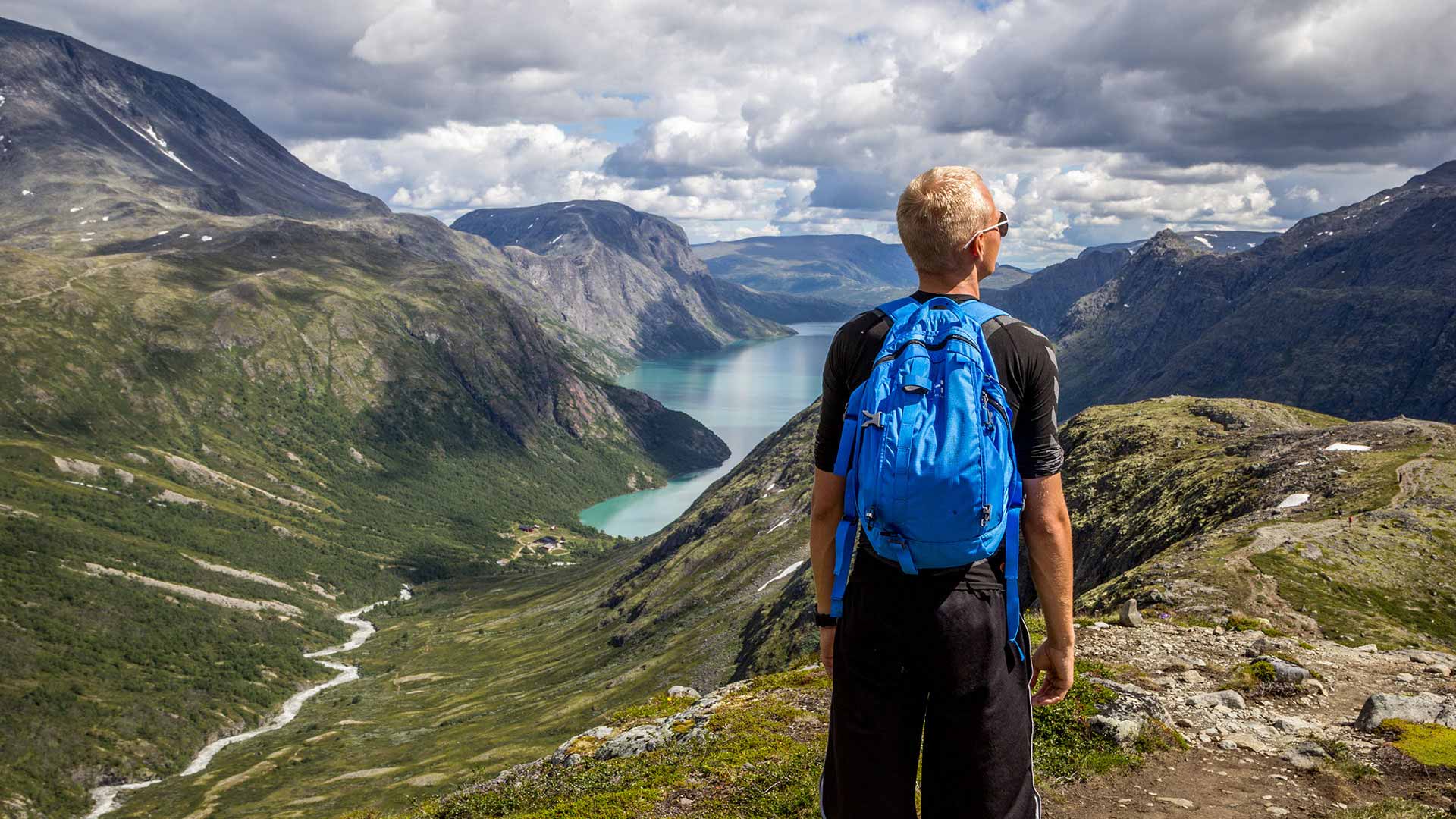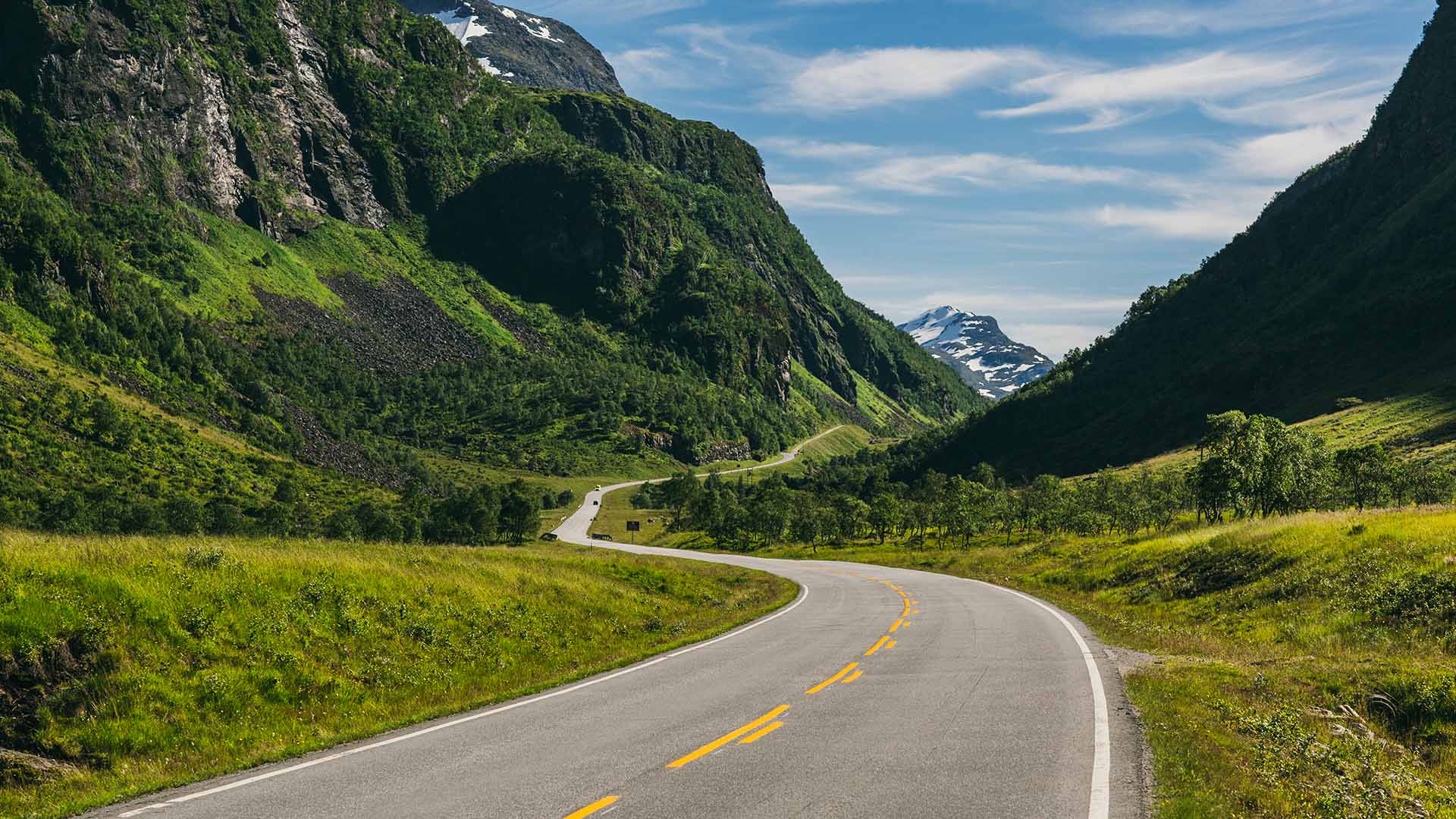Conjure pine-clad mountains, glittering fjords, and colourful clapboard houses peppering an emerald shore. This is Bergen, Norway’s second largest city – and its prettiest.
Sheltered in the arms of seven peaks, Bergen is within throwing distance of some of the country’s most celebrated fjords. Among them are Hardangerfjord, Sognefjord and Nærøyfjord, going to show that the “Fjord Capital of Norway” really lives up to its name.
However, Bergen is more than just a place to set your bags down as you explore Norway’s dramatic waters.
This city is also home to some of the nation’s most significant cultural attractions, like the UNESCO-listed Bryggen. Nor is Bergen relegated to a sleepy European town. Outside of its historical heart, you’ll find a buzzing nightlife as well as a contemporary shopping and dining scene.
If you’ve never been to Norway, Bergen is one of the best places you can start – and you can find out all about it here. We answer the most frequently asked questions on Bergen, provide our tips on how to visit the region, and list our top sights in the city.
- See Bergen on a holiday to Norway

FAQs about Bergen, Norway
What is Bergen known for?
Bergen is undoubtedly known for its nearby fjords and mountains, but within its city limits you’ll find fascinating historical attractions.
There’s the impressive Bergenhus Fortress, the 14th-century wharf of Bryggen, and Troldhaugen, the former home of Norwegian composer, Edvard Grieg.
Is Bergen near the fjords?
Yes. In fact, Bergen is known as the fjord capital of Norway, set between two of the largest in the country: the rugged Hardangerfjord and the beautiful Sognefjord.
The latter is the longest fjord in Norway, and there are spectacular inlets that branch off from this body. One example is Nærøyfjord, which takes the title of being the narrowest fjord in the world, while the lovely Aurlandsfjord shelters the delightful town of Flåm.
Where are the fjords?
Hardangerfjord is located to the south of Bergen, and is the closer of the two famous fjords, whilst Sognefjord is in the north.
Hardangerfjord is perfect if you’re looking for a day trip. Whereas if you want to explore the deep reaches of Sognefjord, you may need to leave yourself a little more time. It is, after all, the longest fjord in Norway!
What is the best way to see the Norwegian fjords?
The best way to visit the fjords depends on what kind of experience you’re after. Bergen fjord tours that incorporate cruises will afford you incredible views of the soaring cliff faces, sparking waterfalls, and enchanting villages that punctuate serene shores.
Meanwhile, a road trip or train ride can have you thrilling at hairpin turns through the winding mountain passes. Or, if you opt to explore on foot, you can see the fjords from above where the water meets the sky.

How far is Sognefjord from Bergen?
The easiest entry point into Sognefjord is Flåm, a 2.5-hour drive from Bergen. This is a spectacular journey!
However, if you’d prefer not to drive, you can get to Sognefjord from Bergen by rail instead. Take the Bergensbanen train to Voss, then hop on a bus to Gudvangen. From here, the journey concludes with a breathtaking cruise to Flåm, taking in views of the UNESCO-protected Nærøyfjord along the way.
How long is the Flåm Railway trip?
The Flåm Railway is 20 kilometres (12.5 miles) long and takes 1 hour. This short trip encompasses some of the country’s most remarkable terrain, offering up panoramic views of Norway’s fjordland.
How many days do you need in Bergen, Norway?
Ideally, staying in Bergen for 2 nights will give you enough time to see the city’s most celebrated attractions, such as the historic Bryggen wharf area and Hanseatic Museum. You’ll have time to enjoy the dining and shopping scene too and take a trip on the funicular railway up to the top of Mount Fløyen.
When should I go to Bergen, Norway?
There is never a bad time to go to Bergen, but the most popular season to visit is summer (May to September). This is when the days are at their longest and warmest, with average temperatures ranging from about 14-17°C (57-63°F).
If you’d prefer a quieter period but want to avoid the winter freeze, then autumn strikes that perfect balance, when the temperature hovers between 5-8°C (41-46°F). Plus, the chance to admire Norway’s forests in their orange glow is another great excuse to visit Bergen in the shoulder season.
Do you need a car in Bergen, Norway?
No, you do not need a car for exploring Bergen itself. You can get around by train, cruise, and small group tours by bus.
However, you may want to hire a car and go on a self-drive tour of some of the magnificent attractions near this spectacular city. Driving in Norway is deemed safe, with excellent road standards.
Can you see the northern lights in Bergen, Norway?
Technically it is sometimes possible to see the aurora borealis from Bergen. But you'll have more chance of viewing the northern lights in Northern Norway, where the night skies are darker and there's low light pollution.
That said, if you're visiting Bergen in the winter and the forecast is good, you might be lucky.
Our tips for enjoying a Bergen fjord tour
There are various ways to embark on a Bergen fjord tour. You can choose to travel aboard cruise ships and trains, by car on a self-drive trip, or with a small group on a guided tour.
Bergen fjord tours: cruise and train
Leave the world behind and embark on a tour of Norway’s fjords by boat and train. The combination of rail and sea travel showcases Norway’s natural and cultural highlights in a unique way.
Explore the charms of beautiful Bergen and then take a scenic train journey through the surrounding mountains to lovely Voss. Then come back down to earth with a languorous cruise to Flåm by way of the remarkable Nærøyfjord.
If you’ve come to Norway for the scenery, you cannot do better than hop aboard the Flåm Railway, one of the most beautiful train rides in the world. If the journey isn’t enough to satisfy your appetite for jaw-dropping views, the Bergensbanen train to Oslo takes you through Norway’s mountainous "rooftop".
The Norway in a Nutshell® tour offers up all these attractions and more, and can be tailored to either start or end in Bergen.
Bergen fjord tours: self-drive
Self-drive tours allow you to follow a hand-picked itinerary incorporating some of the most celebrated attractions of Norway, with the autonomy for side excursions. With a rental car, you can stop off at viewpoints for a scenic roadside picnic, tour sleepy villages, and explore national parks at your leisure.
This kind of tour is best for travellers who would like to explore Norway with more independence. To take in seaside villages and the beautiful coast, you can start in Bergen and weave through the fjords at your own pace.
Or, to see more of Norway’s towering peaks, you can divert through the Jotunheimen National Park. From there, drive towards Dalsnibba for lofty views of the nation’s highest fjord viewpoint.
Alternatively, you could incorporate many of Norway’s classic attractions into one road trip. Start in Oslo, then drive up the country’s interior spine to pretty Trondheim, once a vital Viking trading post. After that, you can swing back around for a cruise down Norway’s stunning western coast.
Bergen fjord tours: escorted and small groups
Of course, if you’d rather take a back seat and fully relax on holiday, we highly recommend opting for a small group tour.
You’ll share a comfortable bus with no more than 15 other like-minded travellers, whisking you to the best beauty spots in the region. What’s more, with an experienced guide accompanying you and imparting their in-depth knowledge, you’ll get a fantastic understanding of Bergen and the surrounds.
Visit Bergen’s charming attractions, such as the UNESCO-listed Bryggen and the summit of Fløyen, before being ushered through the jaw-dropping Sognefjord and Nærøyfjord. If you want to be guided without having to be part of a huge tour bus, a smaller guided Bergen fjord tour is the perfect choice.

What are the top things to do in Bergen, Norway?
Bergen has a long list of attractions, from cultural to historic to outdoorsy, and plenty in between.
Scale Mount Fløyen
If you want to get your bearings in Bergen, the first thing you should do is head to the top of Mount Fløyen. Rising some 319 metres (1,047 feet) off the ground, you can see the entirety of Bergen wrapped around its harbour from up here.
There are a number of ways to reach the summit of Mount Fløyen, soaking up those panoramic views en route. You can pop on your hiking shoes and climb the old-fashioned way, or you can take the funicular rail right to the very top.
If you prefer to walk, there are some wonderful trails on Fløyen, including guided tours with an expert leading the way.
Discover the Bryggen Wharf
The Bryggen Wharf is a UNESCO World Heritage Site, and arguably Bergen’s most popular attraction. Serving as the trading heart of the Hanseatic League between the 14th and 16th centuries, this wharf is a must-see for history buffs.
Luckily, it also happens to be one of the prettiest parts of the city.
With colourful wooden houses and the bobbing sails of yachts in the harbour, it makes for a perfect afternoon of strolling. In fact, wandering through the Bryggen Wharf’s laneways will lead you to a mix of museums, boutiques, restaurants and bars.
Visit the Hanseatic Museum
Out of all the museums in the Bryggen Wharf, the one you must make time for is the Hanseatic Museum. It is usually housed within the 18th-century Finnegården building that once served as a counting house, but it is undergoing restoration (continuing until spring 2024).
However, don’t worry! The museum has been moved to the Schøtstuene building, providing a new insight into how the Hanseatic League’s members worked and lived.
Go on one of the daily guided tours run by the museum, exploring the narrow pathways of the wider Bryggen area and its historic houses.

Marvel at the Bergenhus Fortress
Within the older part of town, there is the Bergenhus Fortress, which is one of the oldest buildings left standing in both Bergen and Norway. This impressive stone structure was built in the 13th century and has several museums within its walls.
The whole fortress is an illuminating window into the medieval history of Bergen. Highlights include Håkon’s Hall, a grand banqueting room built by King Håkon Håkonsson, and the Rosenkrantz Tower, constructed in the 16th century as a defensive fortification.
Dine at the top of a mountain
If you’ve been up the top of Fløyen and want a bigger challenge, you can test your mettle against Bergen’s tallest peak, Ulriken.
The 2-hour hike to the top will reward you with 360° views and the chance to fuel up at Ulriken's hilltop restaurant.
Like Fløyen, if you don’t want to walk to enjoy the lofty views, there is a cable car that can take you right to the summit. Keen hikers can also take the Vidden Trail which connects Fløyen and Ulriken and takes about half a day (around 5 hours).
Explore the Grieg Museum
In the south of the city, you’ll find the delightfully preserved 19th-century home of the Norwegian composer, Edvard Grieg. This building has since been turned into a museum, and music lovers can see where Grieg worked on his most famous compositions.
Tour his villa, and the hut he used as a workspace that sits right by the lake. If you visit Bergen in the summer, you may be able to see a concert on these very grounds.
The Troldsalen, a music hall, was built overlooking Grieg’s lake and hut, and performances are held here on various dates throughout the summer.

Go to the Gamlehaugen mansion
If you like touring royal residences, then this attraction is for you. The majestic Gamlehaugen mansion houses the Norwegian royal family when they visit the city of Bergen. As a visitor, you can tour the Gamlehaugen's first floor.
The open rooms are dedicated to the museum’s last private owner, Christian Michelsen, who was the first Prime Minister of Norway. This is a fantastic attraction for learning about the country’s history and a great way to spend a few hours, especially if you tour the lovingly tended grounds.
Duck into Bergen’s city museums
Right in the city centre, you will discover a cluster of museums dedicated to Bergen’s culture, history, and maritime past. Keen to spend half a day deep diving into the culture of this important city? Then this is where you should do it.
Under the umbrella of the University of Bergen, the Bergen Museum comprises the Historical Museum, the Natural History Collections, the Botanic Gardens, and the Cultural History Collections. Don’t forget to visit the Maritime (Sjøfarts) Museum for the chance to see fascinating exhibits on Viking ships.
Our Bergen fjord tours allow you to be swept away in the rugged landscape of Norway’s fjordland, and fall for the utterly charming town of Bergen.
Spend your days marvelling at the sheer beauty of these serene waters that mirror pine-clad peaks. Enjoy moments exploring Bergen’s museums and dining in its enticing restaurants and bars.
However you’d like to explore Bergen and the fjords, get in touch and we'll tailor a package to suit you.

